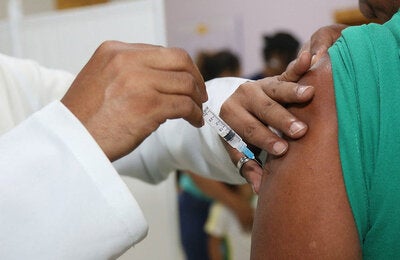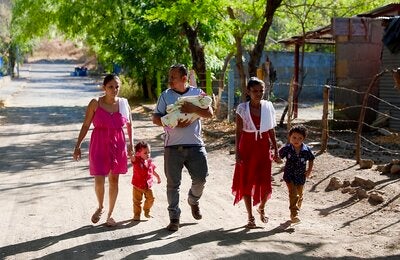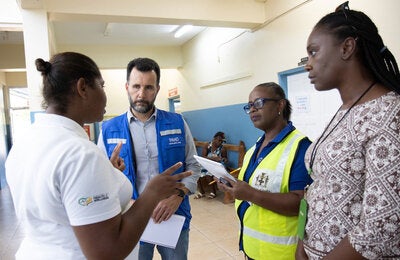New PAHO strategy to guide national policies on human resources for health to overcome an estimated shortage of almost 800,000 workers
Washington, D.C., 28 of September 2017 (PAHO/WHO) - A new strategy approved today by the 29th Pan American Sanitary Conference of the Pan American Health Organization (PAHO) aims to guide national policies on human resources for health in the countries of the Region of the Americas in order to cover the shortage of health workers, improve their geographical distribution, and enhance their skills in order to achieve universal health and the 2030 Sustainable Development Goals (SDGs).
According to the most recent estimates by the World Health Organization (WHO), the Region requires almost 800,000 additional health workers to meet people's essential health needs, while offering a broader range of services and people-centered integrated health care.
"In recent decades, the countries of the Region have reduced profound imbalances in the health workforce and have improved the provision and availability of personnel at the first level of care", emphasized PAHO Director, Carissa F. Etienne. However, she added, "inequities remain in the availability, distribution, and quality of personnel."
Causes of the shortage include limited retention of health workers in rural and underserved areas, high rates of mobility and migration, precarious working conditions, and a lack of culturally sensitive workers with training appropriate to the health needs of the population.
"If we want to reach the SDGs, particularly universal health coverage, we must have adequate health personnel, and we must have them in the places that need them," said Etienne.
The new Strategy on Human Resources for Universal Access to Health and Universal Health Coverage sets out three lines of action:
- Strengthen and consolidate governance and leadership in human resources for health
- Develop conditions and capacities in human resources for health to expand access to health and health coverage, with equity and quality
- Partner with the education sector to respond to the needs of health systems in transformation toward universal access to health and universal health coverage
The document urges countries to increase public spending and financial efficiency to increase the availability and retention of health personnel, develop information systems on human resources for health to strengthen strategic planning and forecasting of current and future needs, and promote the development of interprofessional teams within health services networks.
Furthermore, the strategy advocates for the transformation of professional health education to include the principles of social mission, the incorporation of a public health perspective, and a social determinants approach; to align human resources training with current and future health system needs; and to increase positions in family and community health and in basic specialties, among other actions.



